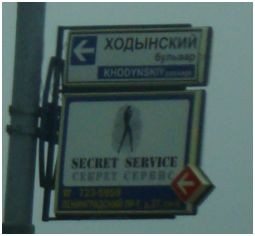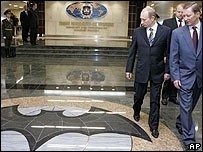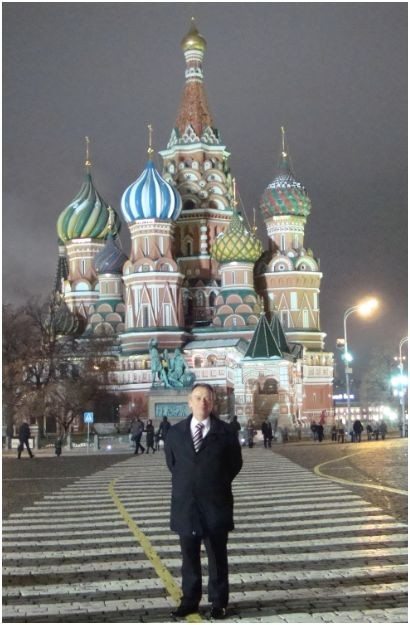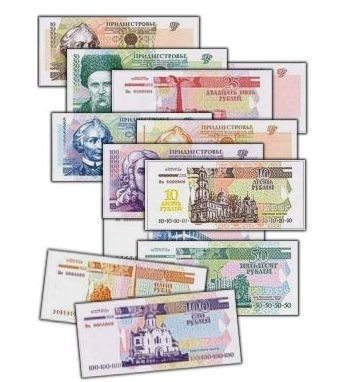
You may be wondering what I’m doing in Moscow (my wife does) ... it’s all to do with new opportunities as the doors open.
I was invited here to join a small software firm who have had success in the Russian and other emerging markets, and are looking for some advice as to how to get to the next level of business. They are introducing me to their Russian clients, including the Stock Exchanges MICEX and RTS, as well as some of their core banking customers in the retail and commercial banking space.
From my side, it’s all fascinating as I get a whirlwind tour of Moscow whilst, at the same time, a whirlwind tour of Russian financial markets.
Today was mainly touring, with visits to the Kremlin, Red Square and such like.
One of the major things I noted is that, since the Berlin Wall came down and the Cold War ended, how much more open and transparent Russian Society is. For example, they even provide signage these days to find their military intelligentsia:

Actually, that's a joke. This sign is just to a local nightclub ...
But speaking of the secret service, I was quite amused to find that during a museum tour, the school children kept pointing at me and whispering with smiles and wary looks sideways.
To begin with, I thought that Russian children had never seen a foreigner before ... then I realised it was the Financial Services Club’s badge that I wear proudly as a lapel pin, as do all members.
The badge is our logo (as above) and, apparently, looks surprisingly like the Russian Military Intelligence Agency’s (MIA) logo ...

... so the kids all thought I was some official from the KGB or something.
Actually, they should have looked closely as not only is our logo a bull and a bear, but the Russian MIA’s logo is actually a bat, but then everything in this place is slightly different in a fascinating and enigmatic way.
For example, St Basil’s Cathedral in Red Square is, to me, the symbol of Moscow to foreigners:

Not so to Muscovites who almost blew it up during the Stalin years. In fact, several national monuments were blown up or removed during those years including this Cathedral ...

... and the Gates that led to Red Square.
Now you may be saying: “but Chris, if they were blown up, how come you could photograph them?”
Answer: the Gates and Cathedral were rebuilt by Boris Yeltsin as an exact replica of the originals which were destroyed in the 1930’s. In the case of the Gates, they were blown up because they obstructed the tank paths when public displays and march pasts were taking place in Red Square. In the case of the Cathedral, it was just a backlash against anything to do with the Church during the Soviet lockdown years of the Doctor Zhivago era.
All fascinating stuff.
But enough of the tourist posting. That’s not what this blog’s about. So what did I find out today about financial services?
Not a great deal actually, as I was a tourist today. Business is tomorrow and Friday.
But I did get one fascinating fact.
Why is the Russian ruble called the ruble (rouble is the French transliteration)?
No idea?
Well, it get its name from the Russian verb rubit, meaning "to chop."
This is because, historically, rubles were produced by chopping a certain weight of silver from a silver ingot.
The ruble itself was therefore the Russian equivalent of the mark, a measurement of weight for silver and gold used in medieval Western Europe.
In ancient times, it was also called “tselkovyi” or “tselkovyi ruble”, which means a wholesome, uncut ruble. This is because the cut ruble might sometimes be cut into further pieces for smaller denominations. So the uncut first ruble, was wholesome.
I could bore you for hours more with Russian history and folklore, which I find fascinating, but instead will leave it at that for today.
Except to say that rubles have been minted in St Petersburg since 1724 at the Monetny Dvor mint, and also in Moscow. This led to the production of smaller denominations of currency, the kopek. Kopek is a derivation of the Russian world kop’yo, meaning spear, and there are 100 kopeks in a ruble.
The first kopeks were produced with the Moscow coat of arms: a picture of Saint George slaying the Dragon on the other ...
... strangely enough, in case no-one noticed, Saint George is also the patron saint of England.
Maybe we have more in common that you first thought.

Chris M Skinner
Chris Skinner is best known as an independent commentator on the financial markets through his blog, TheFinanser.com, as author of the bestselling book Digital Bank, and Chair of the European networking forum the Financial Services Club. He has been voted one of the most influential people in banking by The Financial Brand (as well as one of the best blogs), a FinTech Titan (Next Bank), one of the Fintech Leaders you need to follow (City AM, Deluxe and Jax Finance), as well as one of the Top 40 most influential people in financial technology by the Wall Street Journal's Financial News. To learn more click here...

